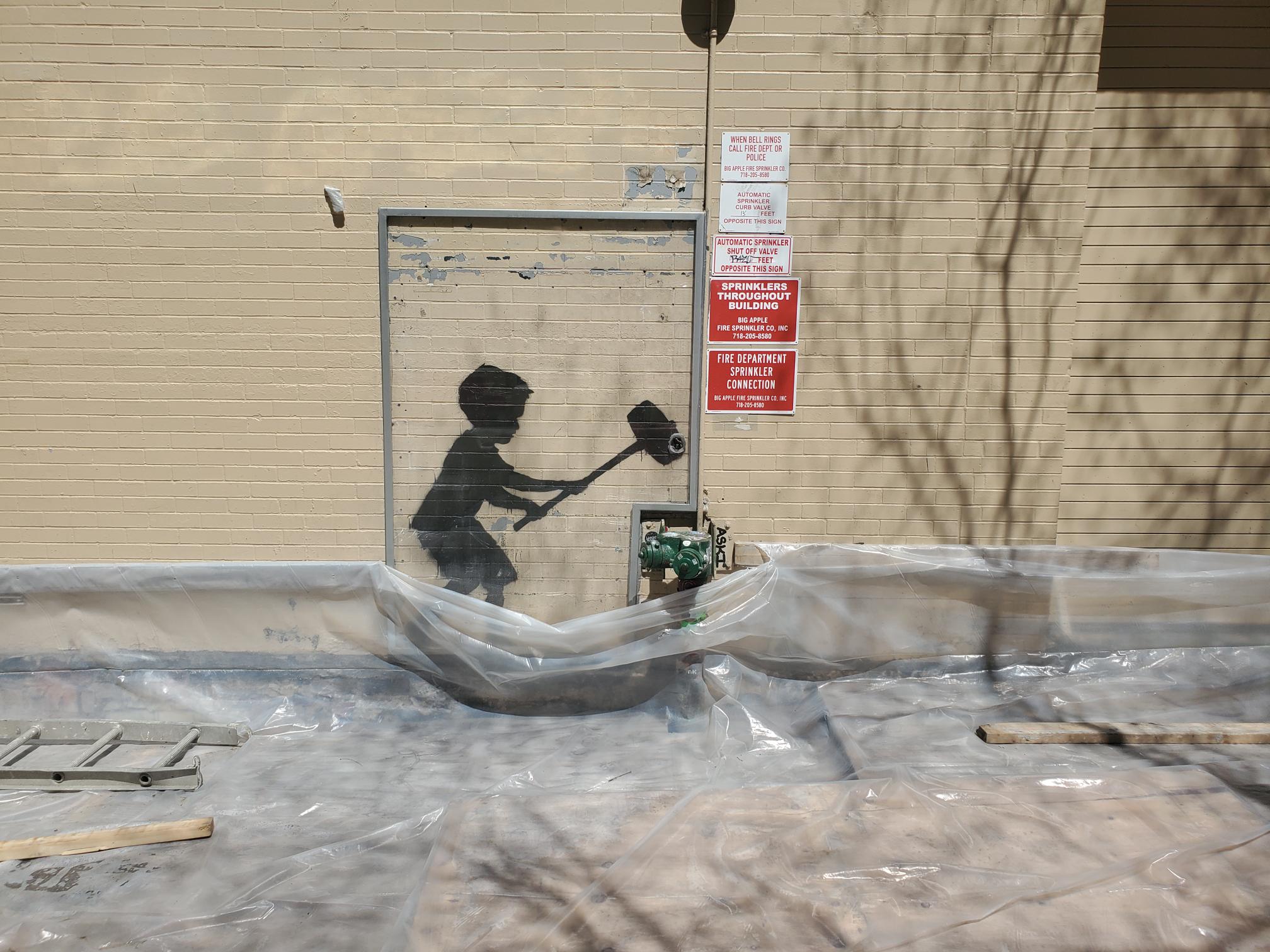
The Banksy mural on a building around the corner from the famed Zabar’s supermarket on the Upper West Side of Manhattan is getting enhanced security after recent construction on the sidewalk adjacent to it.
The mural depicts a young child swinging a sledgehammer at a fire hydrant attached to a building on the corner of W. 79th Street and Broadway. The anonymous street artist painted it in October 2013 as part of a monthlong art spree that he called “Better Out Than In,” in which he created a new work each day.
The building it is painted on, 2220 Broadway, is owned by the Zabar family and Scott Goldshine, the manager of Zabar’s, has been among those at the company tasked with protecting the work since it went up. The building previously housed a DSW shoe store and will soon house a P.C. Richard & Son appliance store.
“We had no idea it was going to become as big a tourist attraction as it has become. But we felt it was art and we liked art, and it was special, so we immediately happened to have some materials in our basement and so we covered it up,” Goldshine said.
The Zabar’s Banksy mural is pictured around the corner from the famed grocer last month during construction on the sidewalk. Photo by Adam Schrader.
The morning after the work went up, plexiglass was secured over the mural with epoxy glue, Goldshine said. However, it was removed for the recent construction of the sidewalk. At the time the construction began, the mural was protected by plastic sheeting that had been duct-taped on the wall.
Andrew Rudansky, a spokesperson for the New York Department of Buildings, said in an email that the permits were issued in November 2023 for the replacement of the sidewalk vault structural deck and concrete sidewalk topping slab. He added that, unless a building is a designated landmark, the city department doesn’t don’t have any specific regulations that would require additional protection for murals or paintings like this.
“We have already re-protected it,” Goldshine said. “We got much stronger plexiglass, not bulletproof, but much stronger and bolted that particular frame through the building and four layers of brick. Someone would have to smash the wall to even get at it.”
Goldshine estimated that the grocer has spent more than $10,000 in protecting the Zabar’s Banksy at this point. He said workers regularly inspect it and clean the plexiglass or replace it when it has been defaced. “Early on there were a couple people that put graffiti over it,” he said. “But the last couple of years, it’s been okay.”
When asked if Zabar’s has any cameras pointed at it or other security measures, Goldshine noted that there are neighborhood watch groups and loyal fans of the grocer that would quickly advise if something was amiss.
“I guarantee if something happened, someone would be over here letting us know,” he said.
Last month, a new Banksy mural was vandalized with white paint just days after it appeared on the side of a residential building in north London. That mural was later surrounded by a protective metal fence and the Islington Council, the local government for the London borough, was reported to be in the process of installing closed-circuit surveillance cameras.
While Banksy’s works can often raise the value of a property, it can also come with negative attention or challenges for the property owner, including the burden of maintaining and preserving the work, increased foot traffic, and legal or insurance issued. Occasionally, works by the artist are removed for violating laws against graffiti or demolished along with the crumbling buildings they were painted on.